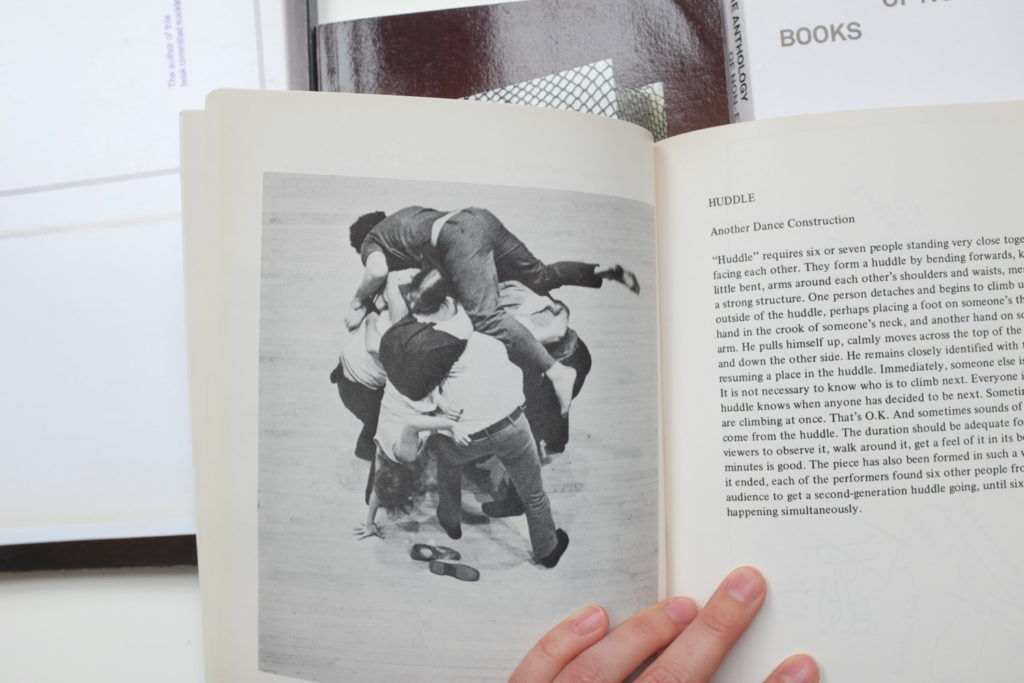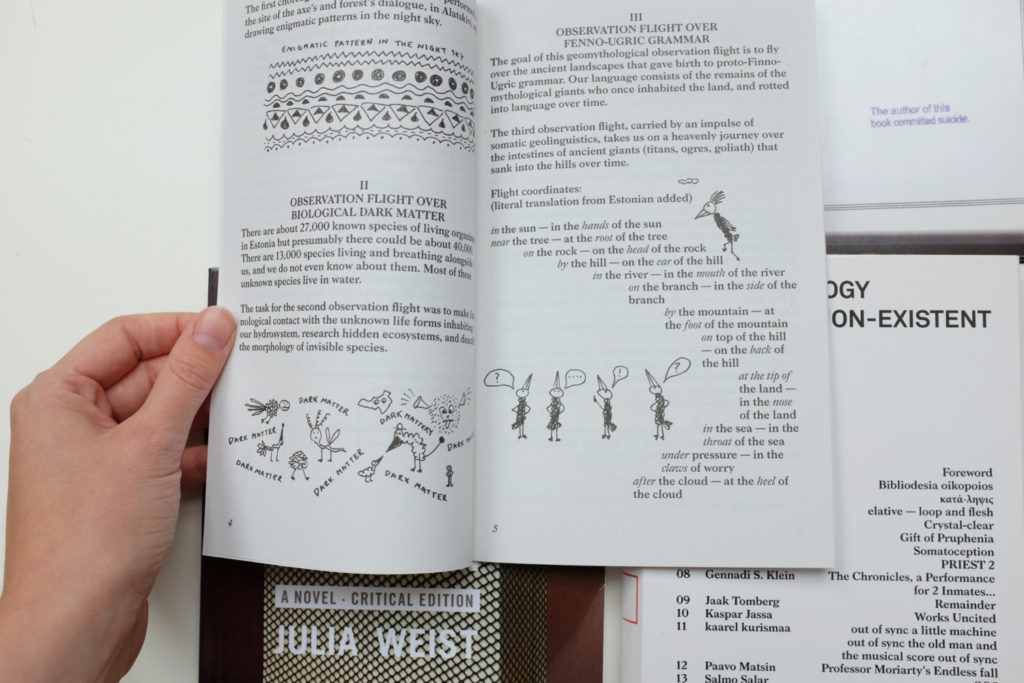Fra biblioteket

Books on books (and selection/rejection)
Handbook in Motion, Simone Forti
New York University Press, 1974
Sexy Librarian, Julia Weist
Ellen Lupton, 2008
The Author of This Book Committed Suicide, Aaron Krach
2012
The Anthology of Non-Existent Books
Paranoia Publishing, 2014

The artists in the exhibition An Anonymous System, which currently runs at RKS, are selected using the online software tool Curatron. Applicants submit their work to this online platform, vote on other artists they’re interested in working with, and afterwards the algorithm determines the best combination of artists for a show. This system eliminates the curator; I will not touch upon the debate to whether or not this is a positive development. However, when I thought of the artist applying to this system, scrolling through an endless (1000+) list of competitors, Simone Forti’s dance instruction Huddle came to mind. Huddle requires six or seven people standing very close to each other to form a pile. One person detaches and starts to climb to the top of the pile – calmly placing hands and feet on someone’s shoulder or arm – and then down again on the other side. Immediately, someone else climbs to the top. Occasionally, two or three people will move towards the top at the same time. The participants will not just feel each other’s breath down their neck, but down their whole body. This pile of people and the endless list of competitors made we wonder how it feels to be rejected by an algorithm.
The romance novel Sexy Librarian opens with the rejection letters that artist Julia Weist received from various publishers upon submitting the manuscript of the same book. ‘Originally, this book was about rejection,’ we read in the epilogue. The project started as an investigation into the books that libraries discard from their collections. How does something become unpopular or unwanted? When do institutions determine that something is no longer relevant? And how do authors feel about these things? In order to come closer to this experience, Weist had to write a book herself, and wait for it to be rejected by publishing houses and discarded by libraries.
To linger over the topic of libraries for a bit longer, I also picked up The Author of This Book Committed Suicide by Aaron Krach. During 2012, Krach searched the New York Public Library for books that are written by authors who committed suicide. Subsequently, he stamped “The author of this book committed suicide” on the title page of each of these books. After the exhibition, the stamped books were returned to the library, where they are now waiting to be noticed by observant readers.

From deceased authors and books that got rejected, it is only a short step to books that do not exist. The Anthology of Non-Existent Books evokes the rich history of books that were never written (or artworks that were never made): Borges, whose stories often describe imaginary books; or Stanisław Lem, who wrote reviews of non-existent books. The anthology presents seventeen appealing booklets that might be too mystical or hallucinating to exist elsewhere.
Ananda Serne